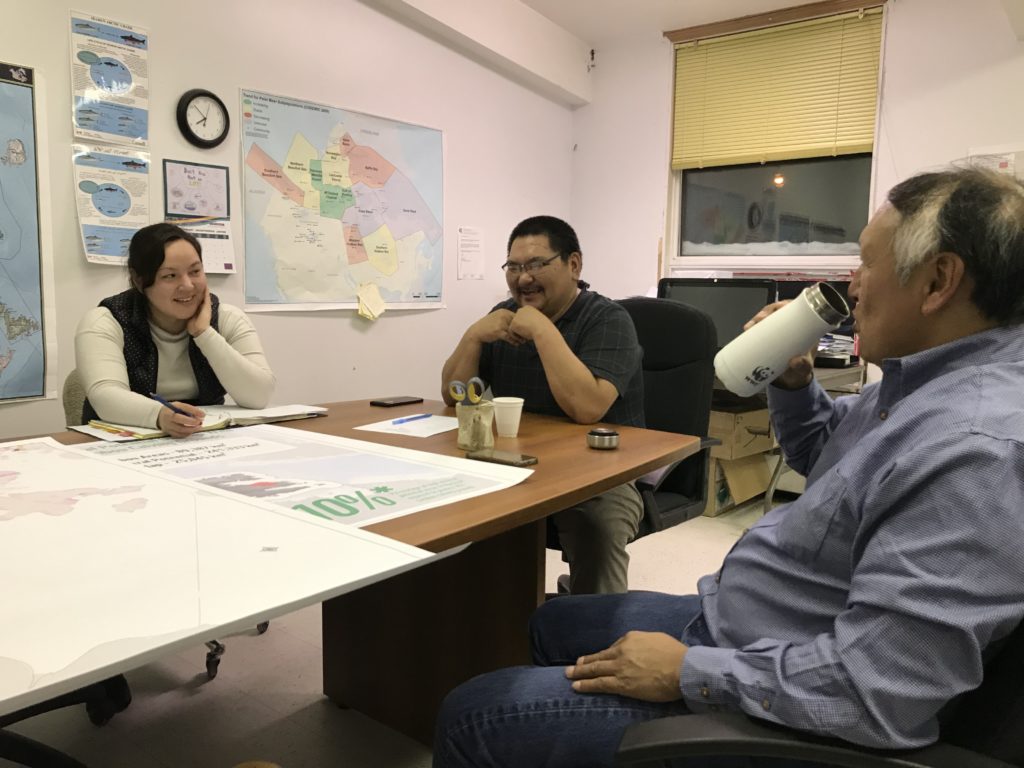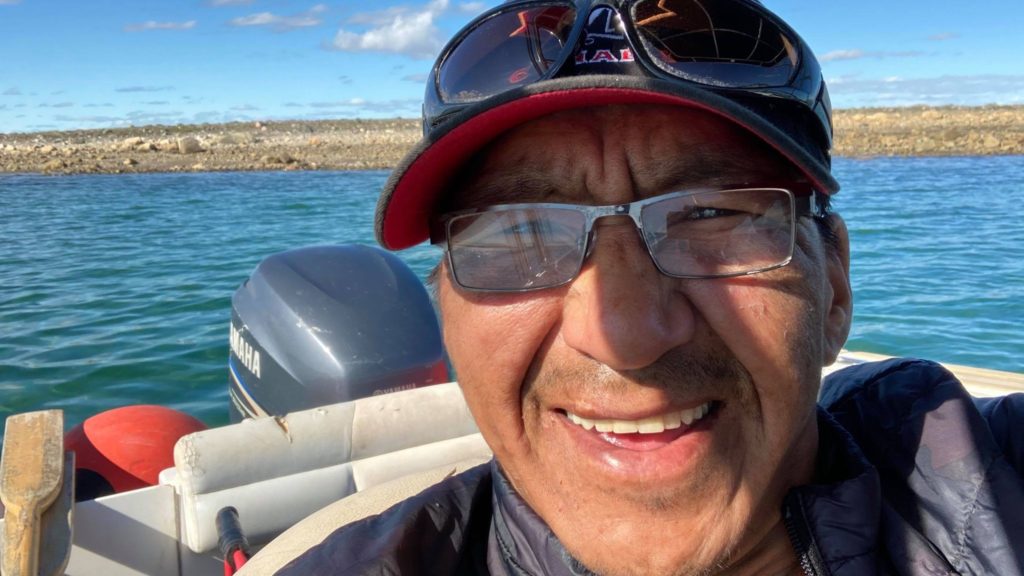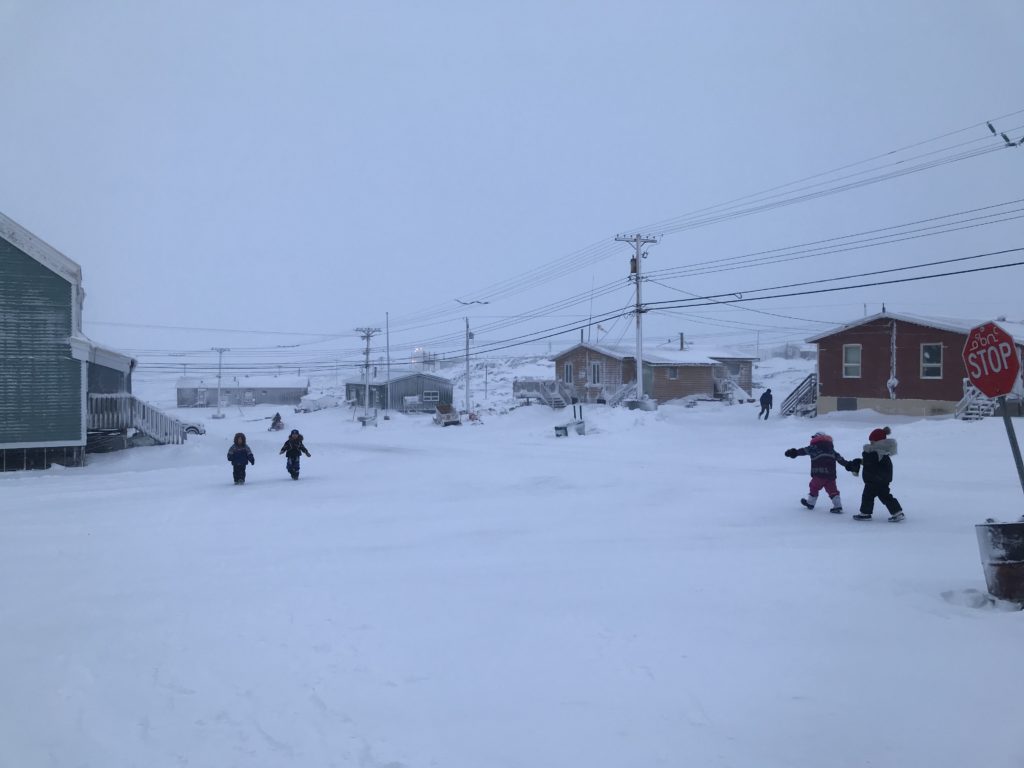Patrolling for polar bears in Whale Cove, Nunavut
A version of this article originally appeared in The Circle.
In fall 2019, WWF responded to a request from the Issatik Hunters and Trappers Organization to fund a locally run polar bear patrol program in Whale Cove, Nunavut, on the western shore of Canada’s Hudson Bay. For two months every summer and fall, two patrollers work in shifts to look for bears that come too close to the community. The goal is to deter the polar bears from entering the community and avoid having to destroy those that may pose a threat to residents.
James Enuapik was a patroller in the program in 2020. Originally from Coral Harbour on Nunavut’s Southampton Island, he moved to Whale Cove more than 35 years ago, when the hamlet of 455 was just a quarter of its current size. He spoke to The Circle about his experience with the program — and the changes he’s seen in the region’s polar bear population.

What are some memorable encounters you had as a patroller?
I live right on the shoreline, basically in the neighbourhood where we ferment our whale blubber. One day there were kids playing around that area and they didn’t know there was a polar bear there. I was lucky enough to have an Elder come by who lives around that area. He came to my house to tell me that there was a polar bear. Out of my window, I could see little kids playing on the hill, and the bear was invisible to them. That jolted me. I almost shot at the bear instinctively. But knowing that I was the polar bear patrol guy, I had to tell the community members not to shoot it and that I would try and deter it with my own firearm, which I did. Luckily, the polar bear swam away from us, from the community. Nobody was harmed, and neither was the bear

What changes have you seen in polar bears over your lifetime?
Over the years, I’ve absolutely seen the changes to the polar bears’ sizes. Back when I was a bit younger, when the season opened up, all the hunters would come back with 10, 12 or 13 footers. Now, the polar bears that are caught during the season are only six to nine feet. I’m pretty sure it’s got to do with the global warming, right? Because the foods they eat throughout the season are on the sea ice and the sea ice is redistributing much faster now than before. The polar bear’s main food is the seal. But the seal is always on the sea ice, and with the sea ice receding, the polar bears tend to go into hibernation or go inland, where they eat much less protein.
How have interactions between polar bears and the community changed over the years?
Back in the day, polar bears were absolutely scared to come into contact with human beings. When a polar bear came into the community, the Elders would say it was because he wanted to be eaten. Nowadays, our customs have changed. We are now intending not to kill the bear. We are trying to get the polar bear away from the community so it cannot harm anyone or itself. But we have been having more interactions with the polar bears because they need to eat whatever they can—and landfill has rotting food that smells. I’m 100 per cent sure that those polar bears are going hungry and they’re having to go into communities to try and feed themselves, which endangers both the community and bears.
Given the changes you’re seeing, what do you think the future holds for polar bears where you live?
In the future, I see them declining in numbers. I see them declining in size. And due to global warming, I’m pretty sure that’s going to adversely affect their ability to hunt.
We’re probably going to see a decline in numbers overall in the Arctic Circle due to the ice receding faster and more human activity. That will mean more unwanted shootings as polar bears attack humans, thinking they are food. And we humans have to defend ourselves with rifles and we have to shoot them. And that’s not right.

On the long term, what do you think we can do as a group?
In the past, we’d never see a polar bear throughout the whole summer, and now it’s almost a weekly occurrence that a polar bear wanders into the community and is needlessly killed for safety reasons. I’m pretty sure that if there were more programs like this one, with more bear monitors and more education in the community about polar bears and their migration routes, the community would benefit, and polar bears would benefit by having the chance to reproduce the next year.
This program is highly beneficial for future generations, especially having the community give input and the bear monitor give input into the program.

